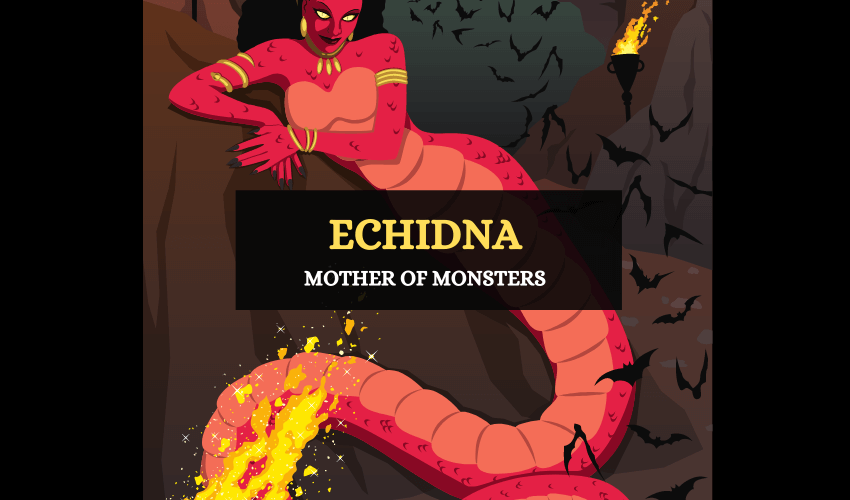
Table of Contents
Echidna was a half-snake half-woman monster, known as the Mother of Monsters in Greek mythology. She was called this because she gave birth to many of the mythical Greek monsters. Her husband was Typhon, the Father of All Monsters, also a dangerous and ferocious monster.
Echidna is a somewhat obscure figure in Greek mythology. Not much is known about her except for what is established in Hesiod’s Theogony and Homer’s Iliad, some of the oldest known records that describe her. Let’s take a closer look into her story.
Who Was Echidna?
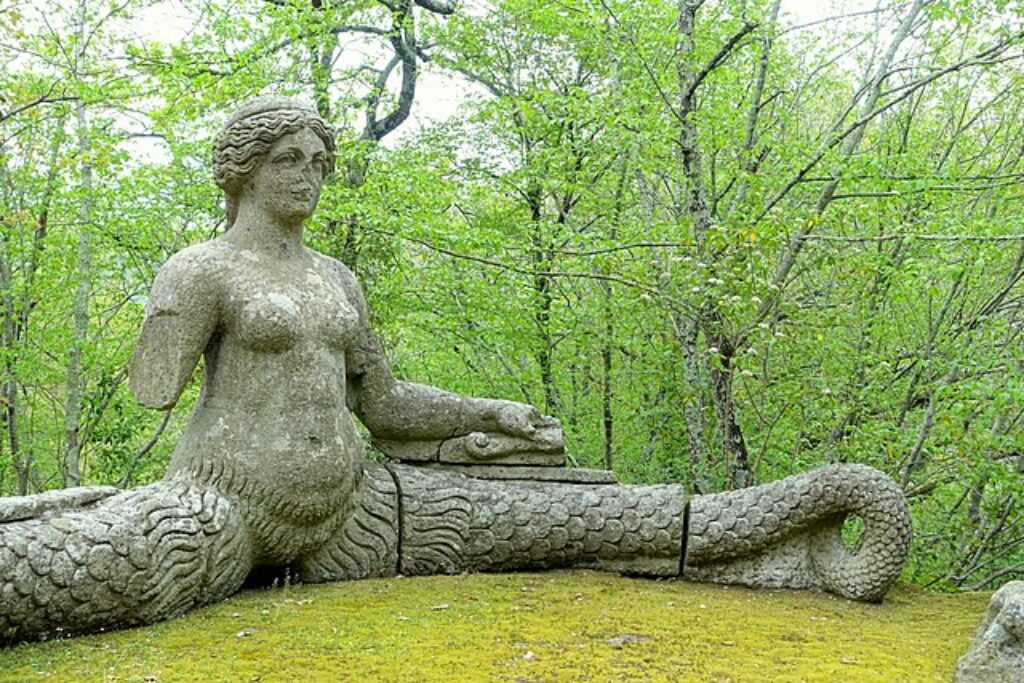
Echidna’s lineage varies according to different sources. In some accounts she’s said to be the daughter of the sea gods Phorcys and Ceto. According to the Bibliotheca, her parents were Tartarus (Underworld) and Gaia (Earth). She was born in a cave, supposedly in a region called Arima, and lived there on her own.
Echidna is often described with a dual nature: her upper half is that of a beautiful woman, while her lower half is that of a serpent or dragon. From the waist down she had either a double or single tail of a serpent. She had ferocious, monstrous characteristics, with poison that could easily kill her targets. Some sources say that she enjoyed the taste of human flesh. Echidna is supposedly immortal and doesn’t grow old or die, but there are some versions of her being killed.
Echidna and Typhon
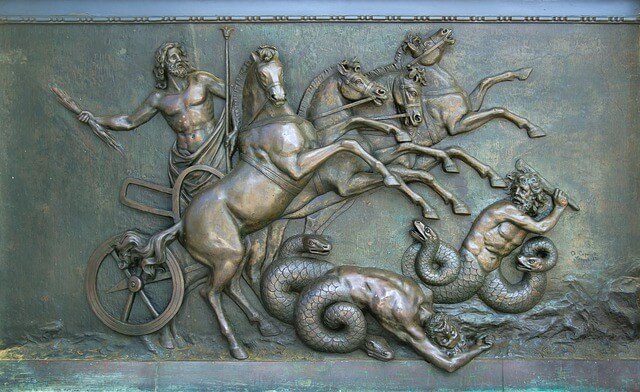
Echidna’s partner was Typhon, another fearsome monster with a hundred heads. Also known as Typhoeus, he was also the son of Gaia and Tartarus. If so, this makes Typhon a half-brother to Echidna. Typhon was more ferocious than Echidna and is described as having snake feet, snakes for hair, wings, and fiery eyes.
Echidna’s Monstrous Offspring
In some accounts, Typhon and Echidna are said to be the parents of all the Greek monsters. Although it’s not exactly clear which monsters were the offspring of Echidna and Typhon, they were known to have seven in general. These were:
- The Colchian Dragon
- Cerberus: The three headed dog guarding the entry to the underworld.
- The Lernean Hydra: A serpentine monster with several heads.
- The Chimera – a terrible hybrid creature.
- Orthus: The two headed dog.
- Caucasian Eagle: The famous eagle of Greek mythology that tormented Prometheus by eating his re-growing liver each day.
- The Crommyonian Sow: A monstrous pig.
Through the Chimera and Orthus, Echidna became grandmother to the Nemean Lion and the Sphinx. These are among the most famous of legendary Greek monsters and all play important roles in various myths about heroes and demi-gods.
In Greek mythology, monsters were meant to be opponents for gods and heroes to overcome. As such monsters, many of Echidna’s children encountered Greek heroes and most were killed. Some of the heroes who faced off with Echidna’s children include Heracles, Bellerophon, Jason, Theseus and Oedipus.
Echidna and Typhon’s War Against the Olympians
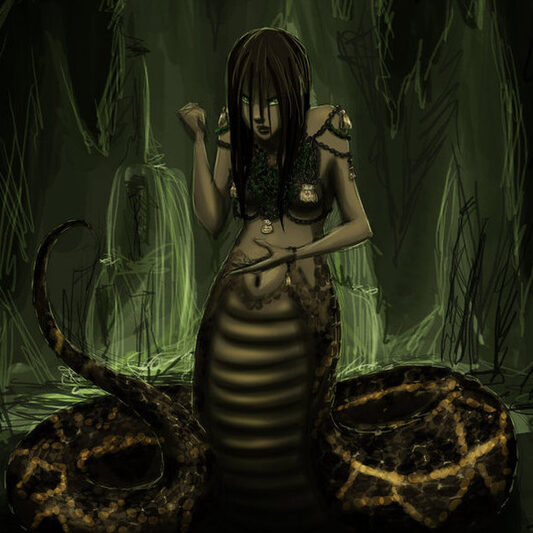
Echidna was angry with Zeus for her children’s deaths, since most of them were killed by his son, Heracles. As a result, she and Typhon decided to go to war against the Olympian gods. As they approached Mount Olympus, the Greek gods and goddesses were frightened at the sight of them and many left Olympus and fled to Egypt. The only god that remained in Olympus was Zeus and in some accounts it’s said that Athena and Nike stayed behind with him.
An epic battle took place between Typhon and Zeus and at one point Typhon had the upper hand until Zeus managed to hit him with a thunderbolt. Zeus buried him under Mount Etna where he still struggles to free himself.
Zeus was merciful toward Echidna and taking her lost children into account, he allowed her to remain free, so Echidna returned to Arima.
Echidna’s End
Echidna was said to be immortal so according to some sources, she still continues to reside in her cave, often devouring those who unwarily passed it. However, other sources say that Hera, the wife of Zeus, sent Argus Panoptes, a giant with a hundred eyes to slay her for feeding on unsuspecting travelers. Echidna was killed by the giant while sleeping. Some myths have Echidna living in Tartarus, keeping Typhon company as he struggles under Mount Etna.
What Does Echidna Symbolize?
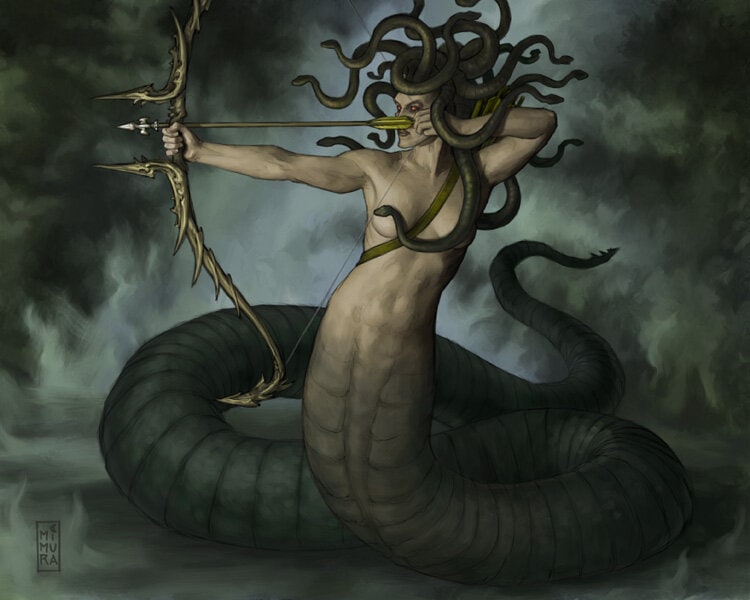
Echidna, the “Mother of Monsters”, is a figure full of symbolism. Her unique and dual nature as both woman/mother and serpent carries several interpretive layers:
- Duality of Nature: Echidna’s half-woman, half-serpent form represents the duality present within nature and perhaps within human nature as well. The beautiful woman can represent the allure, nurturing, or positive aspects, while the serpent often symbolizes danger, chaos, and the unknown.
- Primal Forces: As the mother to many of the most terrifying creatures in Greek myths, Echidna embodies the primal, chaotic forces that exist outside the boundaries of human civilization.
- Feminine Power: In many ancient cultures, serpents are associated with feminine energies, mystery, and sometimes danger. Echidna, in her half-serpent form, can be seen as an embodiment of feminine power.
- Otherness: Echidna and her brood often reside at the edges of the known world, and are seen as creatures to be destroyed by heroes. This can be a broader metaphor for the challenges and unknowns that individuals face when they venture outside their comfort zones.
- The Natural Cycle: Many of Echidna’s children represent chaos and destructive forces. So when they are defeated, it represents a restoration of order and the natural order.
- Motherhood: While her maternal aspect is more fearsome given the nature of her offspring, Echidna is still a mother and one that cares for her children. In this aspect, she represents the fiercer aspects of motherhood, and the extent that a mother will go to protect her children.
The Mammal Named After Echidna
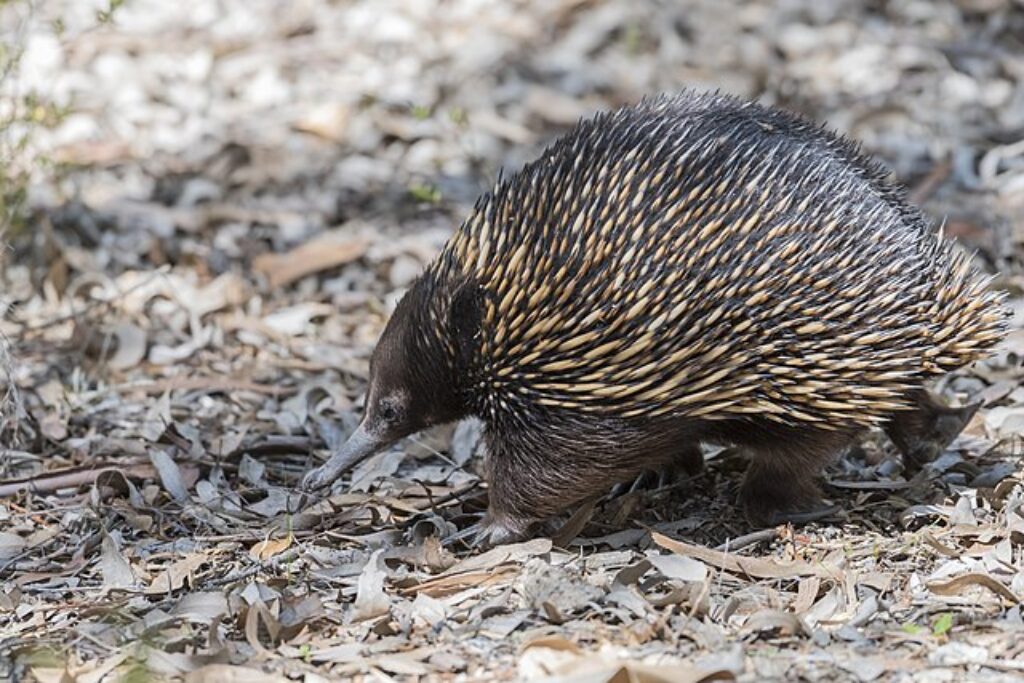
The spiny mammal echidna, commonly found in Australia, is named after the monster Echidna. Like the monster who is half woman half serpent, the animal also has the qualities of both mammals and reptiles, but it is nowhere near as fierce as Echidna was said to be!
FAQs About Echidna
Echidna’s parents are the primordial deities, Gaia and Tartarus.
Echidna marries Typhon, another fearsome monster.
No, she’s a fearsome monster.
Descriptions of Echidna’s powers vary. Ovid mentions that she can produce a terrible poison that can make people go mad.
Echidna is half-woman half-snake.
Wrapping Up
Most stories that mention Echidna deal with other more prominent figures. She mostly exists as a sidekick, a background character or an antagonist in many of these myths. Despite her secondary role, as the mother of some of the most fearsome monsters ever imagined, Echidna remains an important figure in Greek myth.
Related articles
Cassandra: A Voice Ignored in Greek Mythology
Cadmus: First Greek Hero of Them All
Thanatos – Personified Greek God of Death
Oedipus – The Story of the Tragic Greek Hero








